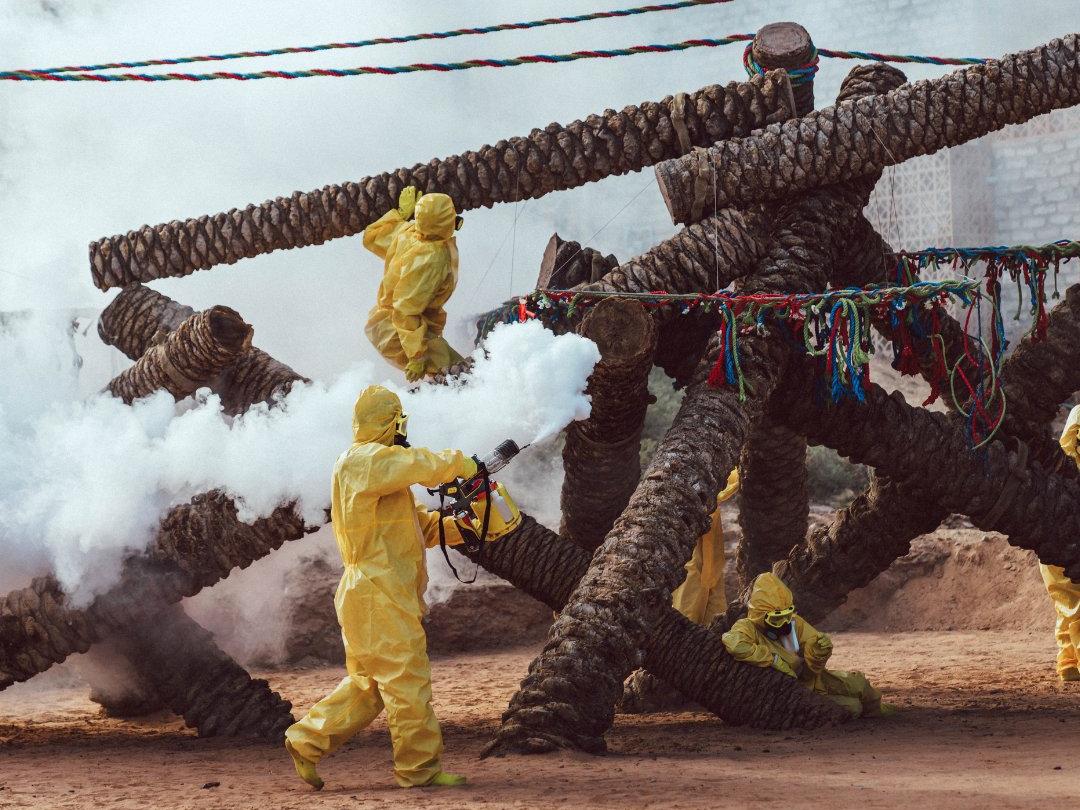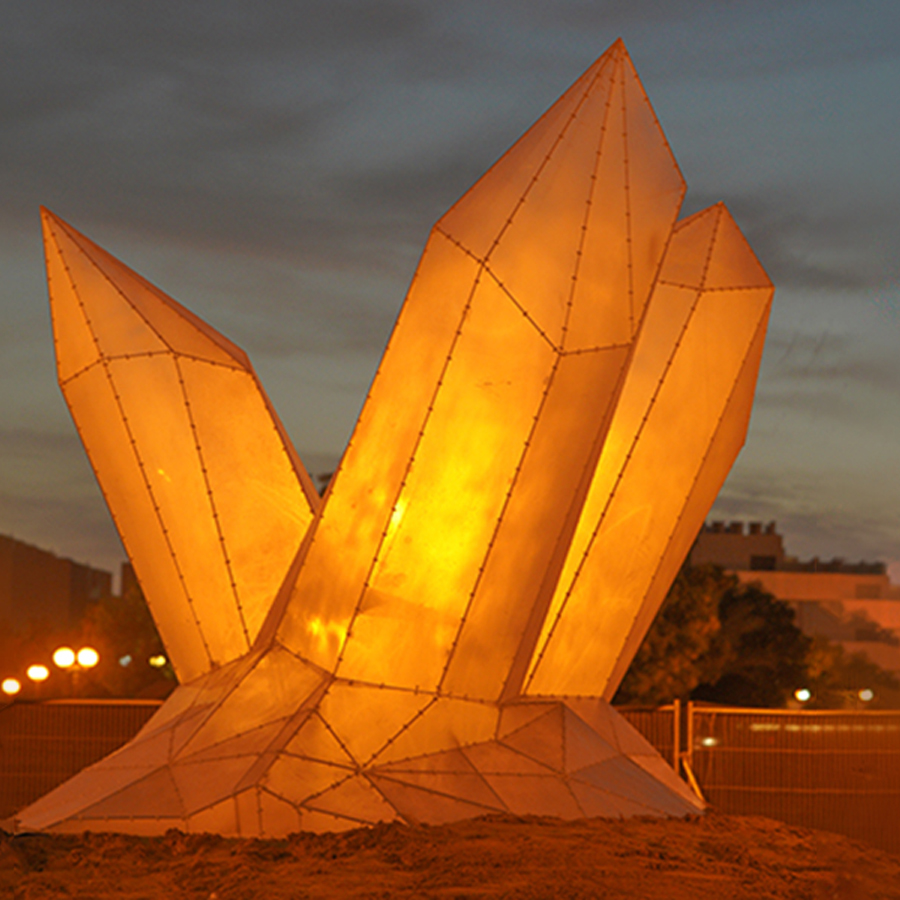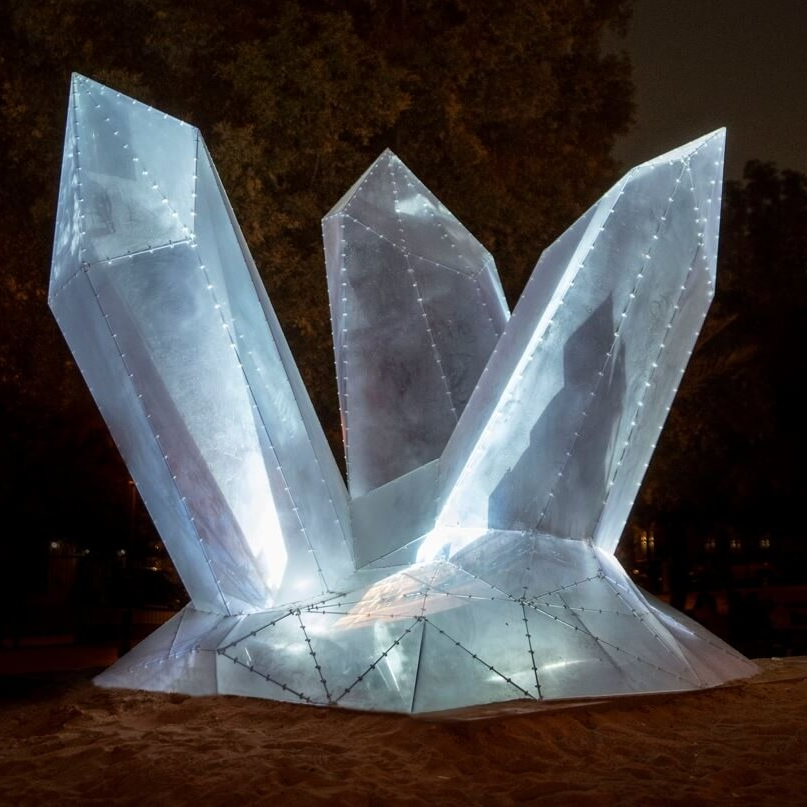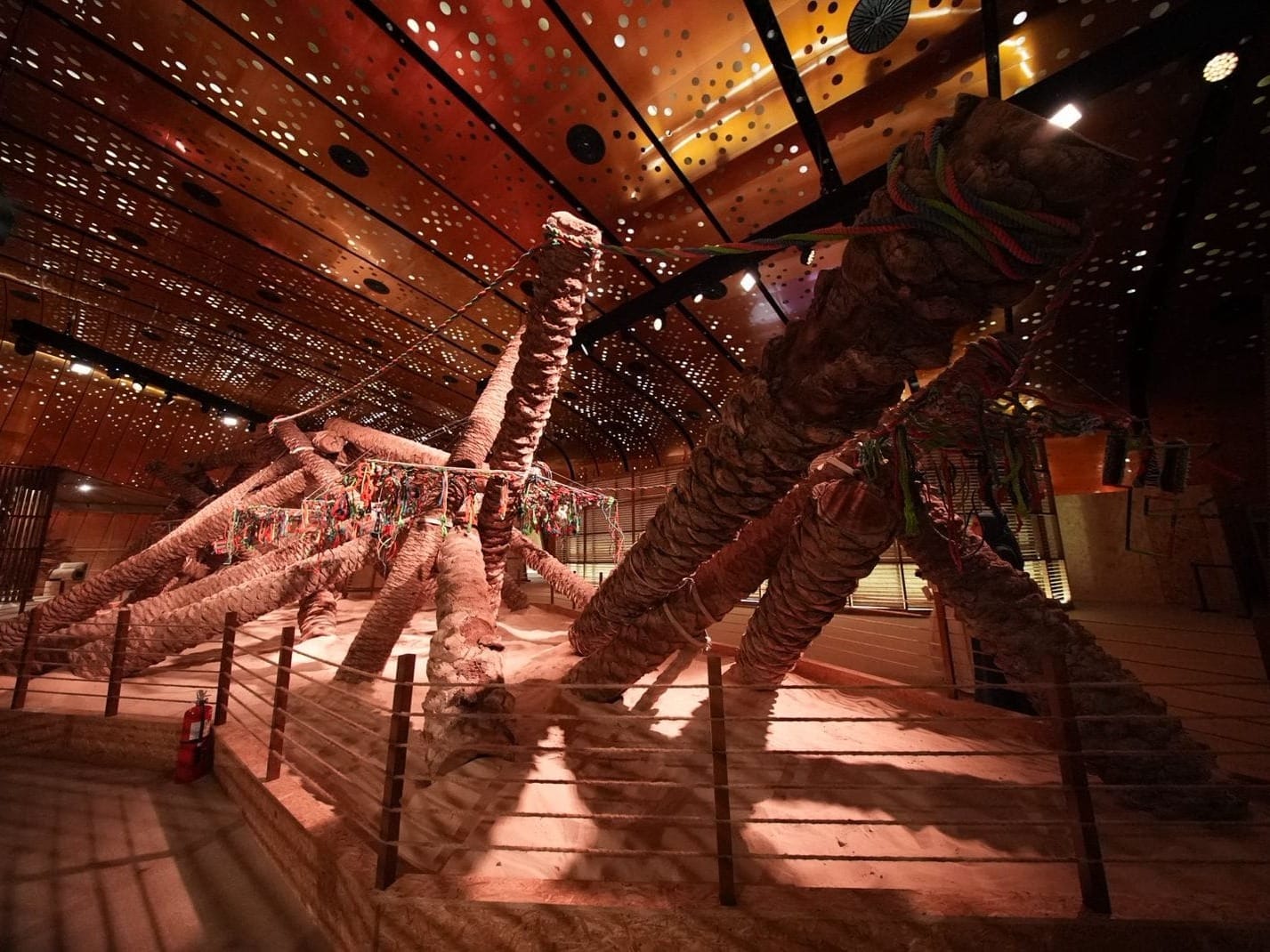
“The artist’s job is to elicit amazement… It’s also our duty to raise people’s awareness about the importance of the environment and preserving it.”
Saudi contemporary art is writing a new chapter where heritage and high technology meet with intention. Few artists embody that merger like Riyadh-based Obaid Alsafi, who translates palm groves, ancestral rituals, and climate anxieties into installations that feel both archival and futuristic. Born in 1991 in Wadi Ad Dawasir, he grew up between dunes and farms, learning to read the world through opposites. A lens that now guides a practice fluent in data, craft, and public space.
Science Meets Spirit in an Artist’s Formation
Obaid Alsafi came of age at a time when studying art at a Saudi university was not an option. He chose computer science instead and carried it into the studio as a second language.

“I think artificial intelligence and technology are an extension of human beings. It shouldn’t incite fear or astonishment. What makes the difference is whether a person interacts with technology positively or negatively.”
— Obaid Alsafi
That clear-eyed pragmatism sits beside an intimate, family-rooted origin story. His father taught art. His grandmother painted her bedroom walls to welcome her husband home from long trips. She could not read or write, but she spoke fluently in images. Through her, Obaid Alsafi learned that art is a living gesture.
In parallel, Alsafi serves as a Senior Cultural Programs Specialist at the Heritage Commission, Ministry of Culture, leading national initiatives that elevate Saudi heritage and support identity-building and sustainable development. Before his current post, Alsafi also served as an Art Director at Sidra Arts and earlier lectured at AlMaarefa University in Riyadh.
The Palm as Biography and Ethos
In his grandfather’s voice, the palm tree was never a motif. It was kin. It fed the family, shaded their days, and stood as a measure of care. That intimacy scales up in Obaid Alsafi work. The symbol holds more than memory. It holds a warning. Rising temperatures and invasive pests threaten the groves that shaped him. Rather than moralize, the artist builds forms that pull viewers into wonder first, responsibility next.
He frames the palm as a contract between generations. To bind old trunks, to braid fiber by hand, to move with the weight of wood. These gestures insist that preservation is not abstract policy. It is work we do with our hands, together.

Palms in Eternal Embrace
The work that crystallized his language is Palms in Eternal Embrace, winner of the 6th Ithra Art Prize and unveiled during the AlUla Arts Festival in early 2024. The prize grants 100,000 dollars to the winning artist, with additional production support to realize the commission, and acquires the work into the Ithra collection. Obaid Alsafi gathered 33 aged date palm trunks and bound them with braided cords into a skeletal form that reads like a vessel. He sourced some trunks from his own family’s land. “I used 33 palm trees and I know each and every one of their stories,” he says. The result is as intimate as it is monumental.


Meaning and Message
The project began as a spare sketch resembling a neural network diagram. It expanded into a collaboration with sixty-three contributors across documentation, 3D modeling, transport, and installation. Several trunks were medically treated and hollowed to ease their movement, each carried a biography the artist can recite. The piece settled into the oasis like memory returning to itself.
The vessel he made is not a promise of escape. It is a warning against displacement. Alsafi has said he does not want the palms to become a boat, to leave their land in search of survival. The work anchors that fear and turns it into a public vow. We preserve what preserved us.
A Residency that Tuned the Ear
The spark for Palms in Eternal Embrace surfaced during a residency in South Korea. For three months, Alsafi lived in near-silence, reading and contemplating in a studio that overlooked a park. “In this isolation, I even heard the sound of trees". The view revived the Wadi of his childhood and asked a hard question: What if all of this green were to disappear. The answer became a structure that braids memory to action.
Light as a Public Language
Two years before AlUla, Obaid Alsafi's inquiry into memory and acceleration was already visible at Noor Riyadh, the citywide festival of light. In 2022 he presented Carving the Future, a tall crystalline structure that pulsed with AI-generated imagery shifting between dunes and the city. Placed in the Horimlaa desert outside Riyadh, the work staged a conversation between origin and speed. Festival coverage described it as a meditation on the relationship between the desert and the civilization that emerged from it. The desert became a screen for the metropolis, and the metropolis a mirror for the desert.
If Palms in Eternal Embrace protects living heritage through material care, Carving the Future preserves it in light, asking whether culture can keep its memory at the speed of change. Across both, Alsafi turns public space into a quiet classroom, provoking curiosity first and letting meaning unfold afterward.


Elegie and the Sigg Art Prize
In 2024,In 2024, Elegie made Alsafi a finalist for the Sigg Art Prize. Treating the dunes not as void but as living archive, he pairs a minimal sculptural base with a screen of shifting, data-born forms. The work asks whether algorithms and neural networks can “decode the hidden language of the sands,” reframing emptiness as a surface for revelation rather than absence. In tone and craft, it’s a quiet manifesto, proof that his computational rigor and spiritual attention move in step.

Baseqat and The Living Legacy of the Palm
In October 2025, Ithra launched the Khoos Initiative to reimagine Saudi palm weaving through residencies, design collaborations, and a major exhibition titled Baseqat: The Palm Tree. Running in Dhahran through March 2026, the exhibition positions the date palm as material, symbol, and living knowledge. Palms in Eternal Embrace anchors the narrative as a centerpiece, now recontextualized within a design-led conversation about heritage, ecology, and innovation.
The move from AlUla’s oasis to Ithra’s Great Hall reveals how Alsafi imagines sculpture as a platform rather than a fixed monument. The work adjusts its social temperature to the room it enters.


Voice, Values, and Aesthetic Intelligence
What distinguishes Obaid Alsafi is his refusal of extremes. He is neither techno-utopian nor nostalgic. He treats technology as a neutral instrument whose meaning depends on the user. He treats heritage not as display but as living knowledge that breathes through practice. The grandmother who painted walls to celebrate love. The grandfather who tended palms from morning to night. The father who taught art. These are not footnotes. They are the operating system.
His aesthetic stays clear-eyed and muscular: structures to walk around or through, materials with biography, light and data as connective tissue rather than the main event. Even in the most digitally inflected projects, the human hand is present in the braid, the bind, the decision to slow down and listen.
The Next Chapter
Saudi art is expanding its horizon, and Obaid Alsafi moves within it with uncommon clarity: translating code into care, materials into memory, and public space into a quiet invitation to protect what protects us. His work reminds us that wonder is not decoration but a tool for stewardship, a way to keep culture and landscape speaking to each other. The arc ahead feels open, generative, and urgent. For Alsafi, this is only the beginning.
Inspired by Obaid Alsafi?
Explore more artist stories that shape Saudi culture at KSA Art.

